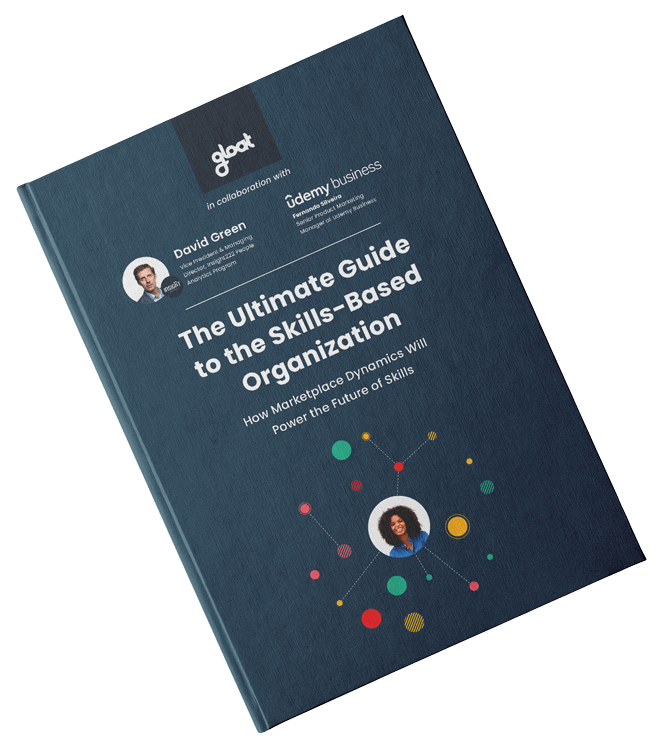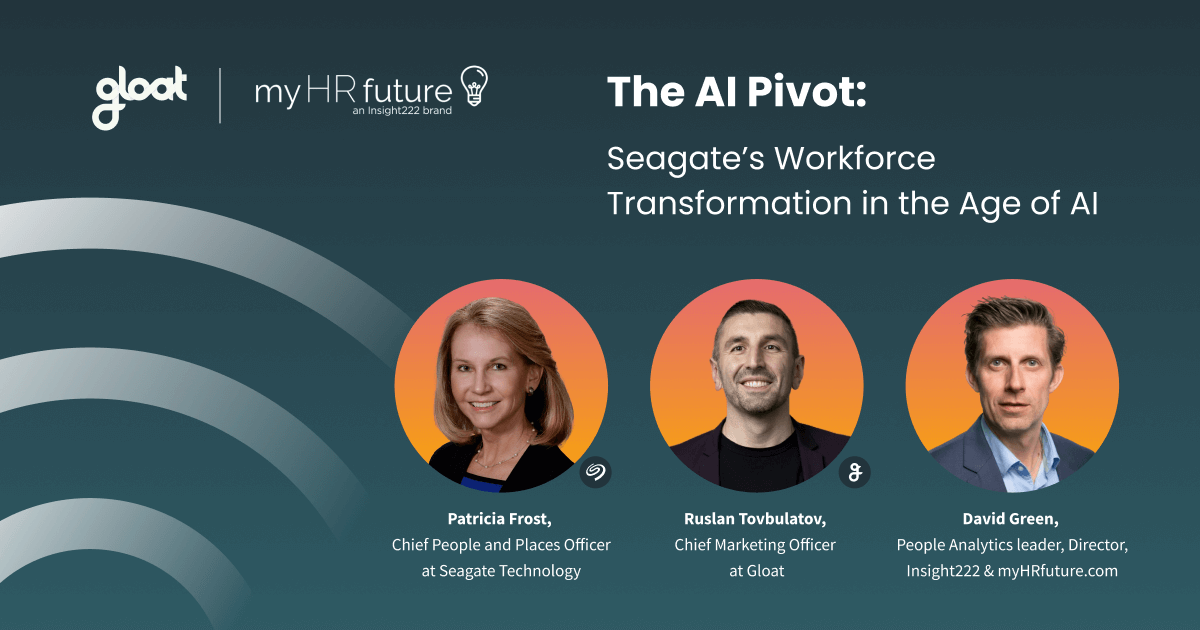How skills-based workforce planning strategies drive success
Upgrade talent management tactics with a skills-centric approach

While working with skill shortages was once considered an exceptional scenario, it’s quickly becoming standard practice for organizations in the new world of work. In fact, nearly 1 in 2 companies acknowledge that they’re currently experiencing knowledge gaps and another 44% predict they’re going to begin grappling with them in the years to come.
Although skills shortages are quickly becoming most organizations’ new normal, that doesn’t mean that working with these gaps is easy. When teams don’t have the expertise they need, performance and productivity inevitably suffer as a result.
To avoid settling for these subpar outcomes, savvy business leaders are prioritizing strategic workforce planning to rethink the way their organizations manage talent so they can minimize these knowledge shortages. In addition to weighing headcount and time constraints, these executives now view skills as the determining factor that influences all of their strategic workforce planning decisions.
What is a skills-based organization?
A skills-based organization describes a company that breaks down work into projects, tasks, and gigs and deploys employees to open opportunities based on their capabilities and experiences.
The skills-based organization is not only a fundamental paradigm shift for talent management; it also changes how work is organized. Businesses that follow this strategy look past jobs as the dominant way to organize work and break down traditional roles into projects, gigs, and tasks based on required skills. This approach enables businesses to achieve greater agility because they can pivot and reallocate talent quickly to respond to emerging challenges in real time.
Traditional versus skills-based approaches
During traditional workforce planning discussions, the main priority has been determining how much work can get done given the number of employees involved in the task. In the Industrial Age, employees were largely replaceable and viewed primarily as cogs in a machine, so this capacity-based outlook made sense.
However, in our Post-Industrial era, every employee comes with their own unique set of skills, so a one-size-fits-all workforce planning strategy no longer suffices. Instead, executives must take their workforce’s capabilities into account when deciding how to allocate talent resources. When project assignments are rooted in skills, leaders can minimize knowledge shortages and prevent any gaps from influencing performance and productivity.
A skills-based approach benefits both employers and workers
Shifting to a skills-based workforce planning strategy has the potential to enhance both business and people outcomes. From an employer’s perspective, deploying people to opportunities based on the skills they possess will help their organization respond to changes more effectively and enhance overall efficiency levels.
At the same time, there’s a lot employees can gain from skills-based workforce planning. Rather than having the scope of their work limited by their job title, people are encouraged to participate in projects across their organization based on their skills. Employees will also benefit from increased visibility into the skills their employer needs most and the capabilities they should hone to take their careers in a new direction.
Benefits of a skills-based approach for employers
Employers reap four main benefits associated with shifting to skills-based operating models, including:
Greater agility
Skills-based organizations recognize that as consumer expectations evolve and technology advances, employees will need to hone new skills to ensure the business can meet shifting demands. By aligning workers to projects and tasks based on their competencies—rather than their job titles—skills-based organizations are better equipped to pivot and react to challenges in record time. Overall, skills-based organizations are 57% more likely to anticipate change and respond effectively and efficiently than their competitors.
Fewer silos
There’s no such thing as a rigid hierarchy in a skills-based organization. Instead, talent flows freely across the enterprise, in turn, empowering more frequent cross-functional collaboration and preventing knowledge from staying trapped within a specific department or team.
Better productivity
When work is unboxed from jobs, it empowers employees to put their skills to use across their entire company, rather than working solely within their individual departments. Skills-based organizations unlock their workforce’s full potential because everyone is encouraged to contribute to projects, regardless of which function or team owns it. Due to this shift in perspective, skills-based organizations are 49% more likely to maximize efficiency when compared to their peers that rely on job-dominant operating models.
Promote diversity and inclusion
Taking a skills-based approach to talent management often removes many of the barriers that have traditionally held employees from underrepresented groups back. When hiring managers get recommendations for who to staff on a project based on their skills—not the names on their resumes or where they went to school—leaders can feel confident that they’re empowering workers from all walks of life to grow within their company. Overall, skills-based organizations are 47% more likely to provide a work environment that is inclusive to all employees.
Improved retention and engagement
When employees are confined to performing responsibilities within a rigid job description, they rarely have the chance to pitch in on different types of projects and broaden their skill sets. Over time, people will grow tired of executing the same set of tasks and begin to disengage, which will ultimately take a toll on retention rates.
Better talent matching and utilization
Every employee is capable of so much more than what they were hired to do. If businesses stick to traditional workforce planning tactics, they miss out on the chance to tap into the full breadth of their workforce’s skills. In contrast, skills-based organizations can redeploy and reallocate talent to ensure transferrable skills are being used to their advantage.
Increased adaptability
Rigid job structures have no place in our ever-evolving working world. While companies that use traditional workforce planning tactics will struggle to find the skills they need, businesses that take a skills-based approach can tap into wider talent pools with a more diverse array of expertise. These organizations can also rapidly redeploy talent and break down work into more manageable projects and tasks that align with the skill sets their workforce has.
Benefits of a skills-based approach for employees
In addition to business-wide benefits, employees will enjoy several key advantages when their organizations implement a skills-based approach, such as:
Expanded career opportunities
When job titles are no longer the sole decider that determines who works on what, employees across your organization will have the chance to hone new skills and move into roles that might have otherwise felt out of reach. Rather than promotions serving as the main career development opportunity, employees can take on lateral moves that will help them broaden their institutional expertise.
Clearer pathways for progression
All too often, employees lack visibility into the skills they will need to hone to take their careers to the next level. When businesses practice skills-based workforce planning, their people gain insight into the capabilities they must build to move into the roles of their dreams.
Increased job mobility
As the labor market cools and promotion rates decline, many employees are feeling stuck in their current roles. Instead of letting this stagnancy put a damper on engagement and productivity, skills-based workforce planning enables employees to work across various teams and join an array of projects, improving mobility across your organization.
3 steps leaders can take to implement skills-based initiatives
If you’re looking to give your workforce planning strategy a skills-based upgrade, here are a few steps to get started:
#1. Ensure your skills inventory is up to date
To implement a skills-based approach to workforce planning, leaders must recognize that they’ll need to look beyond who has the capacity and assess which employees have the skills needed to complete high-priority tasks. In the past, it was challenging to evaluate workforce capabilities because most skills information was siloed amongst various HR systems and repositories.
Rather than settling for a subpar understanding of skills, companies are harnessing tools like Gloat’s Skills Foundation to gain full visibility into all of their people’s capabilities. These systems are updated in real-time and pull from your HCM and an employee’s LinkedIn profile or CV so managers don’t have to worry about overlooking in-demand talent with needed skills.
#2. Identify segments of your workforce to reskill and upskill
Once leaders have a clear picture of the skills within their workforce, they can begin to pinpoint where their organizational knowledge may be falling short of industry standards. Instead of guessing which skills will become more important in the new world of work, skills intelligence tools like Gloat’s Skills Foundation harness data from proprietary sources such as market information and customer aggregates to understand trending and declining skills and supply and demand in different markets.
#3. Empower everyone to continue honing their skills
Beyond acquiring skills through external hiring, employees should be encouraged to develop their expertise so they can take on new projects within their organizations. To prevent knowledge gaps from holding people back, HR leaders should ensure their workforce has the chance to participate in experiential learning opportunities that will enable them to build on-the-job expertise. By generating suggestions for projects, gigs, and mentorships based on the skill gaps your business needs to close, talent marketplaces increase access to high-priority skills development opportunities.
Measuring success: key metrics for skills-based workforce planning initiatives
Traditionally, the success of workforce planning centered around measuring how much work could be accomplished given an organization’s headcount and upcoming time constraints. While measuring efficiency is still a priority, there are several other benchmarks executives should prioritize when assessing their skills-based workforce planning strategy.
Leaders should review the amount of money they’re spending on contractors and freelancers; typically, implementing a skills-based strategy will minimize the need for additional resources, adding to the overall ROI this approach delivers. Executives can also track the percentage of projects that employees from different teams are working on to get a sense of how their skills-based approach is fueling cross-functional collaboration across their business.
To find out more about the tools and frameworks you can use to put skills at the center of your workforce planning strategy, check out our guide to becoming a skills-based organization.





